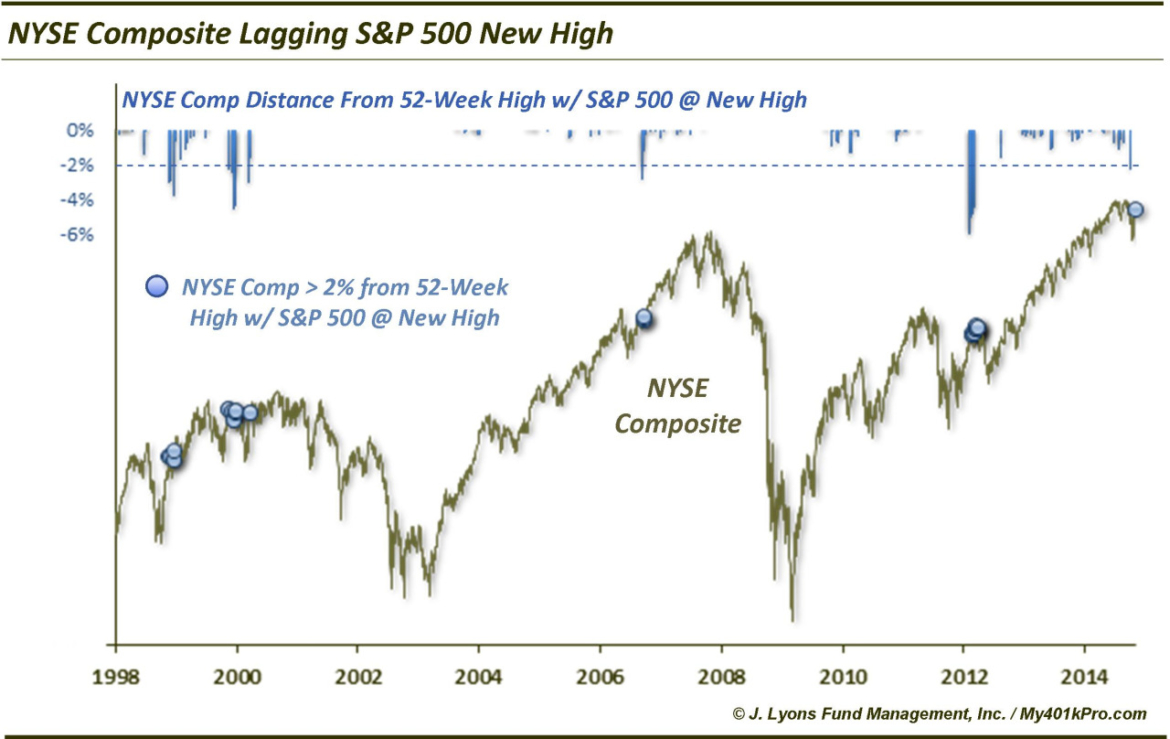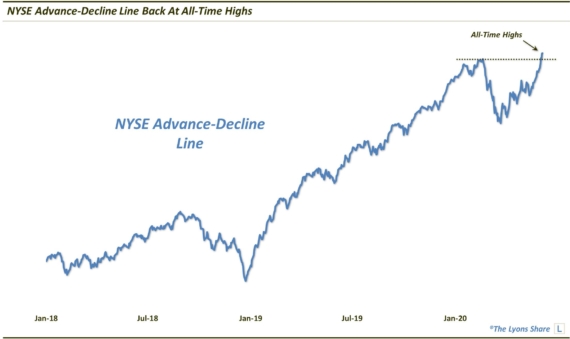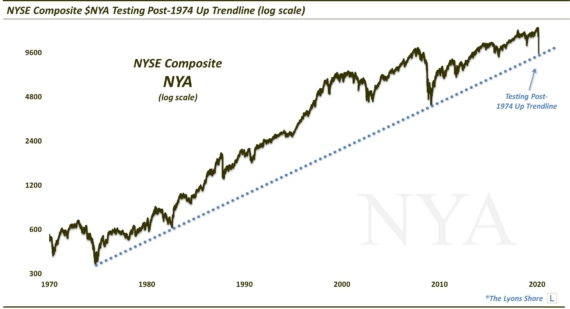Broad Market Lagging Behind In Current Rally
After a stunning rebound in October, the S&P 500 is back trading at a 52-week high. And you know what that means – divergences are back. After spending much of the summer discussing divergences, we don’t want to go overboard on the topic yet again. For one, these divergences can last for some time as we have discussed often. Indeed, it took several months for any ramifications of the summer’s divergences to kick in during September-October, and even then they were short-lived.
One of the divergences accompanying the recent new S&P 500 52-week high has been the failure of the broad NYSE Composite to also make a new high. At last Friday’s new high in the S&P 500, the NYSE Comp was still more than 2% from making a new high as well. That may not sound like a big deal, and we probably would not have even mentioned it, except for one thing. It is very rare.
Since 1966, there have only been 5 other unique (i.e., removing instances clustered together) occasions that the S&P 500 traded at a new 52-week high yet the NYSE Comp was at least 2% below its. None were before 1998. Two of the instances, 1998 and 2006, were pretty clearly a case of the S&P 500 reaching a new high before the NYSE Comp was able to catch up. It was not a signal of a thinning rally. The market was coming off of an intermediate-term sell off and the large cap S&P 500 simply made it to new high ground first. Afterward, stocks, both large and small continued higher for another 6-9 months before any trouble.
The other three instances, late 1999, early 2000 and spring of 2012 were a signal that the ongoing market rally was beginning to thin out, i.e., fewer stocks were participating in the rally. The 99-00 period obviously led to the major stock market top. The 2012 instance led to a 2-month decline and a 6 month stagnation in the stock market, preceding the now 2-year straight shot up.
So which category would our current situation fall into? Considering the market is coming directly off a sharp, albeit short, sell off, the benefit of the doubt should probably be given to former example. That is, the S&P 500 likely just beat the broad market NYSE Composite to a new high and the NYSE should probably be given a little time to catch up. This scenario is probably backed by the fact that the breadth thrust off the low was very strong, though obviously not strong enough to propel the NYSE to a new high.
That said, it does not dismiss other concerns pertaining to the lagging of certain broader indices such as the small and mid caps as well as equally weighted indices. Those continue to be a concern. However, in this instance, though the divergence is rare, we would tend to give the NYSE a little time as this rally develops to prove it can also reach a new high.
________
More from Dana Lyons, JLFMI and My401kPro.



